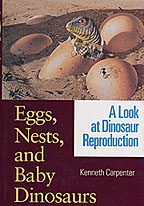Every now and then I pop in an xbox game to give my brain a rest; for a while it was Dynasty Warriors 3, but now it’s Jurassic Park: Operation Genesis. For those unfamiliar with it, it’s essentially a sim game where you can make your own Jurassic Park, overseeing dig sites, research, husbandry, etc. and like most sim games it’s fun up to a point. What I found most interesting, however, was what I could do once I unlocked Site B.
When Site B is unlocked, money and tourist-attractions are no longer an issue; you can make up to 60 dinosaurs that will roam the island at any one time. While the game is far from a scientific simulator, I decided to see what would happen if I made a few herds of herbivores and threw various carnivores into the mix. Here’s the rought numbers;
X 10 Triceratops
X 10 Brachiosaurus
X 10 Edmontosaurus
X 5 Ankylosaurus
X 5 Kentrosaurus
X 5 Velociraptor
X 5 Allosaurus
X 5 Tyrannosaurus
X 5 Albertosaurus
Once I set the carnivores loose, things got messy. Many of the Velociraptors were killed trying to take down full-grown Triceratops on their own. The Albertosaurus spent most of their time running around in fear of the Tyrannosaurus, which seemed to be more interested in fighting and securing territory than hunting. The Allosaurus actually tried to hunt, but whenever they went after a Triceratops or Brachiosaurus other members of the herd took them out. Indeed, very quickly I went from having an abundance of carnivores to 0, only a few herbivores shy of the total I initially made. Again, it’s just a game, but I think it speaks to what can happen when there are just too many carnivores; if I had made a Tyrannosaurus or two, plus a small group of Velociraptor or Albertosaurus, things might have worked out a bit better. Of course, the AI of the game is limited and the dinosaurs behave according to set behavior patterns, but it is fun to experiment with what combinations would result in a balanced predator/prey relationship.














Recent Comments